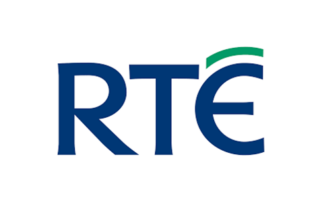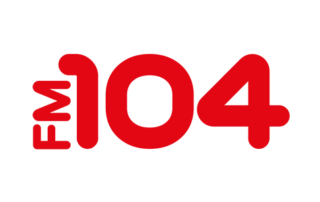
How to Read Your Electricity Meter
The vast majority of homes in Ireland have now had a smart meter installed by ESB Networks, which has removed the need for meter readings.
Unlike traditional meters, smart meters send your electricity consumption directly to ESB Networks, who send it to your energy supplier so that they can calculate your bill.
However, you can still read your electricity meter to find out more about your electricity consumption.
Here is a guide to gauge your home energy consumption.
Types of Electricity Meter in Ireland
There are four main types of electricity meter in Ireland, with smart meters replacing traditional meters. While most homes now have a smart meter, the roll-out is not complete, meaning some households are still using a 24-hour Meter, Day & Night Meter or a Pay as You Go Meter.
How to Read a Smart Meter
Smart meters have removed the need for traditional quarterly meter readings as they send data directly to ESB Networks via radio frequency transmissions – which is essentially 2G technology. However, the smart meter still shows how much electricity you have consumed.
There are two ways to view your electricity usage: by reading your smart meter and by viewing your data online.
On your smart meter, the screen displays your electricity consumption in kilowatt-hours (kWh). To read the meter accurately, you should read all of the digits on the screen before ‘kWh’.
To access more specific readings for different times (night, day, peak) or for exported electricity, follow these steps, you can press the button on the meter. Different information is displayed depending on how many times you press the button.

View your Electricity Usage Online
Another easy way to view your electricity usage is by setting up an online account with ESB Networks. You can set up your account in minutes on the ESB Networks website.
Once you have logged in, click on the ‘My Energy Consumption’ icon to see a chart showing your electricity usage, which can be switched to daily, monthly, or yearly views using the dropdown menu.
The chart includes a breakdown by time of day:
You can view and download up to two years of data, even if you’ve changed suppliers within this period. Data updates can take 36 to 48 hours to appear.
If you generate electricity, with solar panels for example, you can also track and download information on your energy exports to the grid.
How to read a 24-Hour Meter
Reading a 24-hour electricity meter is simple. 24-hour meters can be either electronic or revolving disk. The display on a 24-hour meter shows your total electricity usage in kWh.
In the case of both 24-hour and Day & Night revolving disk meters, the final number(s) in red or surrounded by a red box should be ignored.
How to read a Day & Night Meter
A digital Day & Night Meter has a blue button, which can be used to scroll through data which is presented on the display. Pressing the blue button will display different information depending on how many times it is pressed.
How to read a Pay as You Go Electricity Meter
Reading and topping up your Pay as You Go Meter is straightforward. Here’s how to top up your credit using the keypad on your meter.
Pay as You Go Meter Terms Explained
FAQs

Author:

Michael Malone
SOLAR ENERGY EDITOR
Michael Malone is Solar Energy Editor at Energy Efficiency Ireland. He is committed to highlighting the benefits of solar PV for people across the island of Ireland, and is eager to clear up some misconceptions which linger among the Irish public regarding solar energy.
Author:

Michael Malone
Solar Energy Editor
Michael Malone is Solar Energy Editor at Energy Efficiency Ireland. He is committed to highlighting the benefits of solar PV for people across the island of Ireland, and is eager to clear up some misconceptions which linger among the Irish public regarding solar energy.
Popular Content 🔥
How to Read Your Electricity Meter
Written by
Last edited
18/07/2025
The vast majority of homes in Ireland have now had a smart meter installed by ESB Networks, which has removed the need for meter readings.
Unlike traditional meters, smart meters send your electricity consumption directly to ESB Networks, who send it to your energy supplier so that they can calculate your bill.
However, you can still read your electricity meter to find out more about your electricity consumption.
Here is a guide to gauge your home energy consumption.
Types of Electricity Meter in Ireland
There are four main types of electricity meter in Ireland, with smart meters replacing traditional meters. While most homes now have a smart meter, the roll-out is not complete, meaning some households are still using a 24-hour Meter, Day & Night Meter or a Pay as You Go Meter.
How to Read a Smart Meter
Smart meters have removed the need for traditional quarterly meter readings as they send data directly to ESB Networks via radio frequency transmissions – which is essentially 2G technology. However, the smart meter still shows how much electricity you have consumed.
There are two ways to view your electricity usage: by reading your smart meter and by viewing your data online.
On your smart meter, the screen displays your electricity consumption in kilowatt-hours (kWh). To read the meter accurately, you should read all of the digits on the screen before ‘kWh’.
To access more specific readings for different times (night, day, peak) or for exported electricity, follow these steps, you can press the button on the meter. Different information is displayed depending on how many times you press the button.

View your Electricity Usage Online
Another easy way to view your electricity usage is by setting up an online account with ESB Networks. You can set up your account in minutes on the ESB Networks website.
Once you have logged in, click on the ‘My Energy Consumption’ icon to see a chart showing your electricity usage, which can be switched to daily, monthly, or yearly views using the dropdown menu.
The chart includes a breakdown by time of day:
You can view and download up to two years of data, even if you’ve changed suppliers within this period. Data updates can take 36 to 48 hours to appear.
If you generate electricity, with solar panels for example, you can also track and download information on your energy exports to the grid.
How to read a 24-Hour Meter
Reading a 24-hour electricity meter is simple. 24-hour meters can be either electronic or revolving disk. The display on a 24-hour meter shows your total electricity usage in kWh.
In the case of both 24-hour and Day & Night revolving disk meters, the final number(s) in red or surrounded by a red box should be ignored.
How to read a Day & Night Meter
A digital Day & Night Meter has a blue button, which can be used to scroll through data which is presented on the display. Pressing the blue button will display different information depending on how many times it is pressed.
How to read a Pay as You Go Electricity Meter
Reading and topping up your Pay as You Go Meter is straightforward. Here’s how to top up your credit using the keypad on your meter.
Pay as You Go Meter Terms Explained
FAQs

Author:

Michael Malone
SOLAR ENERGY EDITOR
Michael Malone is Solar Energy Editor at Energy Efficiency Ireland. He is committed to highlighting the benefits of solar PV for people across the island of Ireland, and is eager to clear up some misconceptions which linger among the Irish public regarding solar energy.
Author:

Michael Malone
Solar Energy Editor
Michael Malone is Solar Energy Editor at Energy Efficiency Ireland. He is committed to highlighting the benefits of solar PV for people across the island of Ireland, and is eager to clear up some misconceptions which linger among the Irish public regarding solar energy.















